IMAGE |
SITE NAME |
DESCRIPTION |
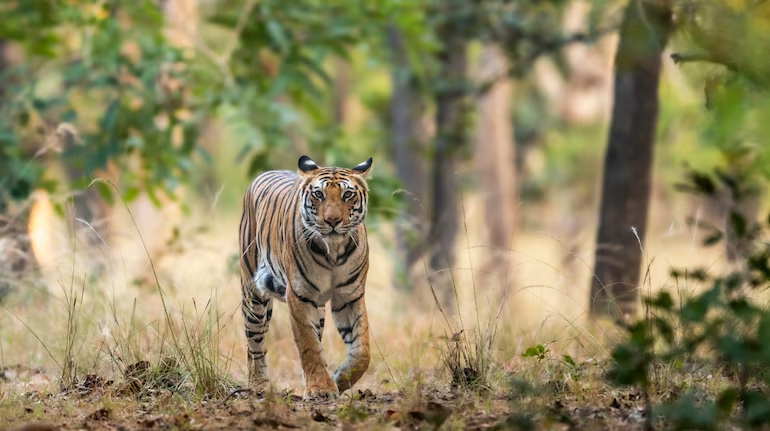 |
NATURAL PARKS |
India’s national parks, many of which are UNESCO World Heritage Sites, are vital for preserving the country's rich biodiversity and natural beauty. For example, Kaziranga National Park in Assam is home to the one-horned rhinoceros and offers a haven for diverse wildlife. The Sundarbans National Park, famous for its Royal Bengal tigers, is a sprawling mangrove forest in West Bengal, while Keoladeo National Park in Rajasthan is a crucial stop for migratory birds. Manas National Park in Assam is known for its unique grassland and forest ecosystems, supporting endangered species like the golden langur.Other notable parks include Nanda Devi and Valley of Flowers National Parks in Uttarakhand, known for their breathtaking landscapes and rare alpine flora. The Western Ghats are another critical region, known for their vast diversity of plants and animals across multiple states. The Great Himalayan National Park offers high-altitude habitats for species like the snow leopard, while Gulf of Mannar Marine National Park in Tamil Nadu protects diverse marine life, including the endangered dugong. These parks not only protect India’s natural treasures but also carry immense cultural and ecological importance. |
.jpg) |
PHILOSOPHY AND LITERATURE |
Indian heritage is deeply enriched by its philosophy and literature, which have shaped the country’s cultural, spiritual, and intellectual identity for thousands of years.Indian literature spans an array of languages and forms, from the ancient Vedic hymns and epic Mahabharata and Ramayana, to the works of classical poets and philosophers. The epics not only narrate stories of gods and heroes but also convey moral lessons, ethical dilemmas, and cultural values. Works like the Bhagavad Gita (part of the Mahabharata) are revered for their philosophical depth and spiritual guidance. Classical literature includes the poetry of Kalidasa, who composed the renowned play Shakuntala, and Bhasa, known for his ancient dramas. In the medieval period, Bhakti and Sufi literature emphasized devotion and mysticism, while Sanskrit and Tamil literature flourished with works like the Silappatikaram and Tirukkural.ndian philosophy and literature have been instrumental in shaping not just Indian culture but also contributing to global intellectual traditions, with their profound insights on human nature, ethics, and the universe. They continue to inspire and influence philosophical and literary thought today. |
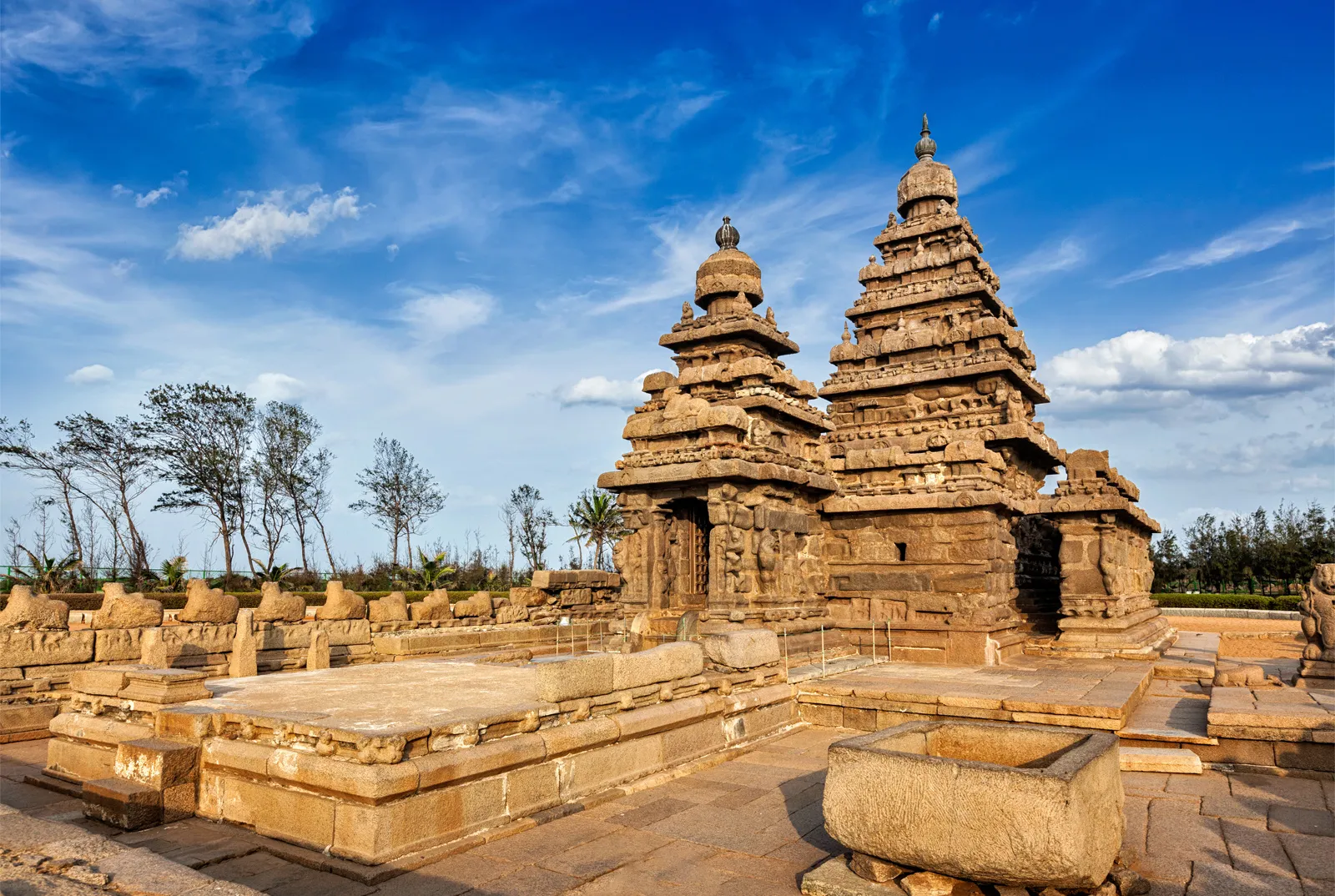 |
CULTURAL TEMPLES |
Cultural temples are central to India’s heritage, serving as not only places of worship but also as symbols of the country’s artistic, architectural, and spiritual richness. These temples reflect the diverse religious traditions of India, which include Hinduism, Buddhism, Jainism, and Sikhism, among others, each contributing unique elements to the cultural fabric of the nation.Hindu temples, such as the Kailasa temple in Ellora (Maharashtra), the Brihadeeswarar Temple in Thanjavur (Tamil Nadu), and the Kashi Vishwanath Temple in Varanasi, are masterpieces of ancient architecture, with intricate carvings, towering spires (Shikhara), and detailed sculptures depicting deities and mythological stories. The Golden Temple in Amritsar (Punjab), a prominent Sikh temple, is revered not just for its spiritual significance but also for its stunning beauty, with its golden dome and serene reflecting pool.Temples like the Jagannath Temple in Puri (Odisha) and the Somnath Temple in Gujarat hold deep cultural importance, not just for their religious significance but also as centers of social and cultural activities. These temples were often patronized by kings, which helped foster an environment for arts, dance, music, and learning. |
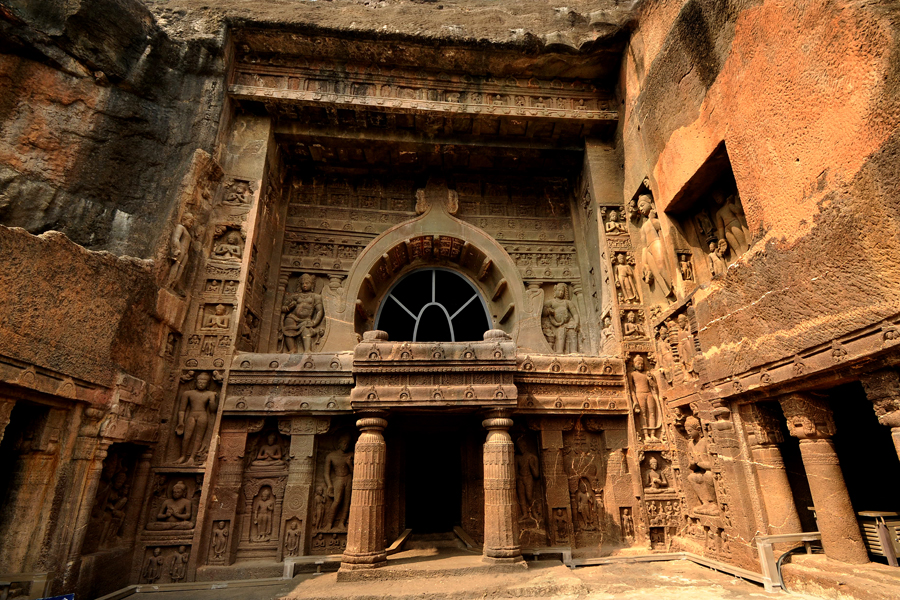 |
CAVES |
Caves in India are significant both as natural wonders and as repositories of rich cultural and religious heritage. These caves, many of which date back to ancient times, have been used as places of meditation, worship, and art, reflecting the diverse spiritual and artistic traditions of the country.The Ajanta Caves in Maharashtra, a UNESCO World Heritage Site, are renowned for their exquisite Buddhist murals and sculptures that depict the life of the Buddha and various Jataka tales. These caves, carved into the rock face, are masterpieces of ancient Indian art, showcasing intricate wall paintings and sculptures that illustrate Buddhist philosophy and teachings.The Ellora Caves, also in Maharashtra, are a complex of Hindu, Buddhist, and Jain caves, highlighting the religious diversity of the region. Among them, the Kailasa Temple stands out as an architectural marvel, with a single monolithic structure carved from a hill, demonstrating the extraordinary engineering skills of the time.In the southern state of Tamil Nadu, the Badami Caves are famous for their rock-cut temples dedicated to Hindu gods, while the Meghalaya Caves such as Siju and Mawsmai are noted for their limestone formations and religious significance. |
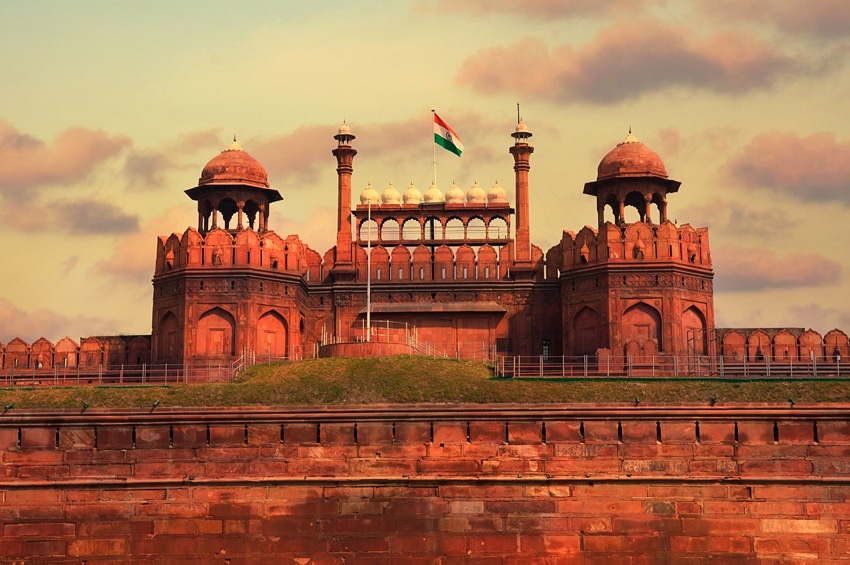 |
FORTS |
Forts in India are monumental symbols of the country’s rich history, showcasing its military, architectural, and cultural heritage. These imposing structures, built across various regions, served as defensive strongholds, royal residences, and centers of power, reflecting the grandeur of India’s past dynasties and empires.Some of the most famous forts include Red Fort in Delhi, a UNESCO World Heritage Site, known for its stunning Mughal architecture and its role as the seat of the Mughal emperors. The Mehrangarh Fort in Jodhpur (Rajasthan) is another architectural marvel, offering breathtaking views of the city and showcasing intricate carvings and historic exhibits.The Chittorgarh Fort in Rajasthan, one of the largest in India, is renowned for its historical significance, linked to stories of valor, sacrifice, and Rajput pride. Similarly, the Gwalior Fort in Madhya Pradesh, known for its majestic walls and temples, stands as a testament to India’s medieval military architecture.In the south, the Golconda Fort in Hyderabad is famous for its acoustics, massive gates, and the historic stories associated with it, while the Vijayanagar Fort in Hampi (Karnataka) reflects the grandeur of the Vijayanagara Empire. |
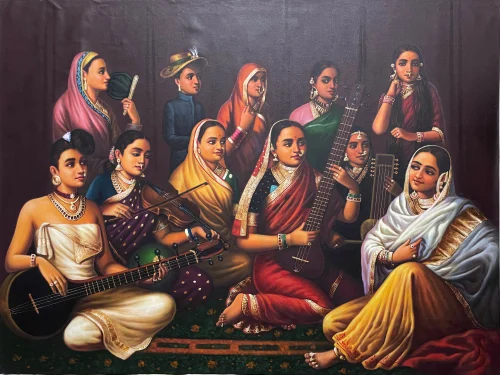 |
ART AND MUSIC |
Art and music are integral to India's cultural heritage, deeply rooted in its ancient traditions and spiritual practices. Indian art is known for its diversity, vibrant colors, intricate details, and symbolism. From the ancient Mughal miniatures to the Pattachitra paintings of Odisha, Indian art reflects the country’s rich history, religious beliefs, and cultural diversity. Temple architecture and sculptures, such as those found in the Khajuraho temples and Ellora caves, showcase extraordinary skill and depict mythological themes and deities.Indian classical music, which has two main traditions — Hindustani (North Indian) and Carnatic (South Indian) — is deeply rooted in spirituality and often linked to religious rituals. It is based on ragas (melodic frameworks) and talas (rhythmic cycles), creating an intricate and meditative soundscape. Instruments like the sitar, tabla, veena, and flute play a crucial role in classical performances, and dance forms like Bharatanatyam, Kathak, and Odissi are performed alongside music to tell stories and express emotions.
Folk art and music also play a vital role in India's cultural expression, with various regions contributing distinct forms of art and music, such as Kathakali from Kerala, Bhangra from Punjab, and Lavani from Maharashtra. These forms continue to thrive today, preserving traditional expressions while also evolving with modern influences. Together, art and music form the heart of India’s cultural identity, celebrating its history, diversity, and creativity. |

.jpg)



